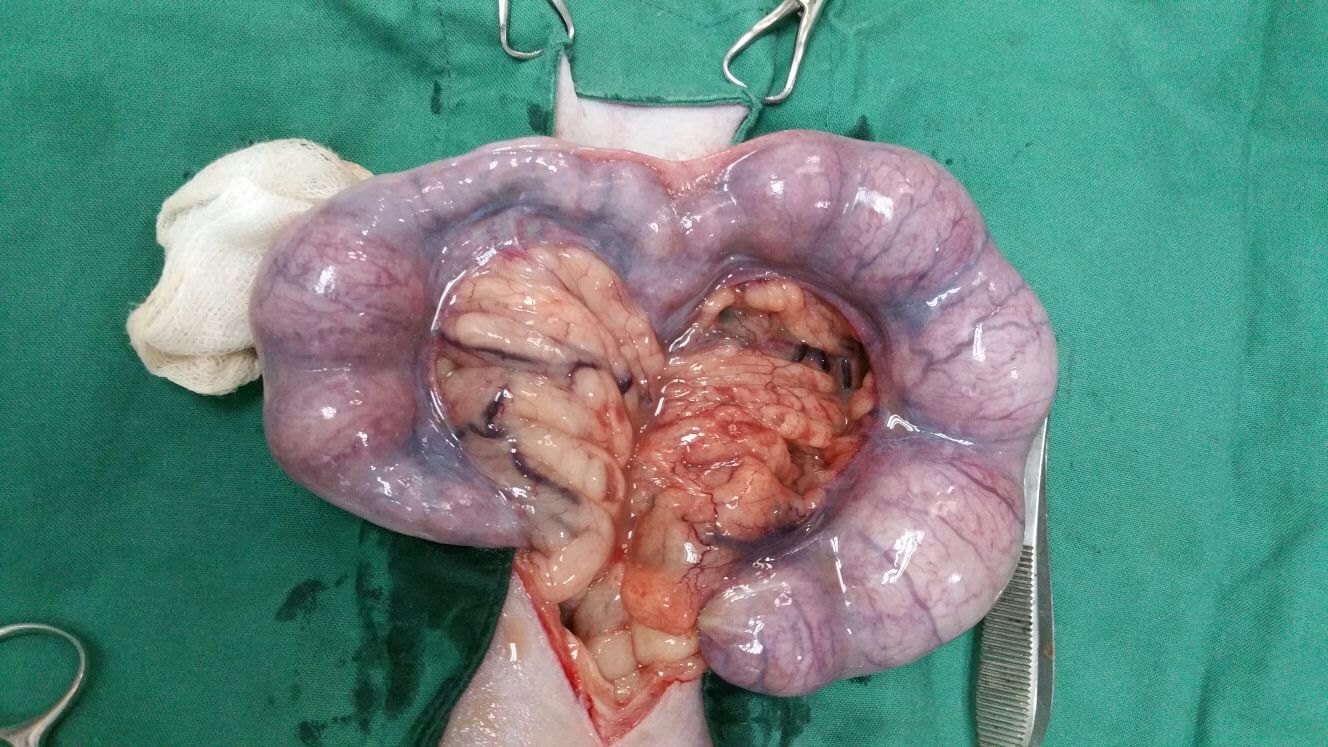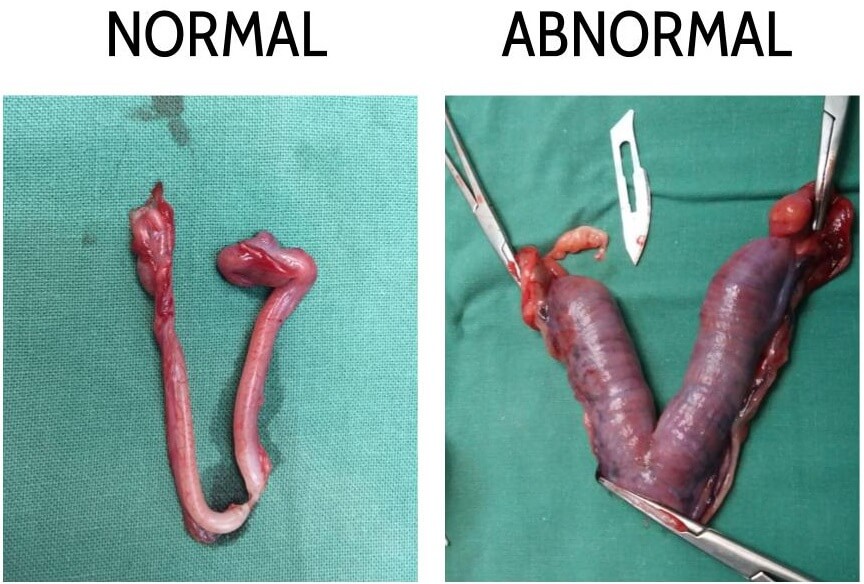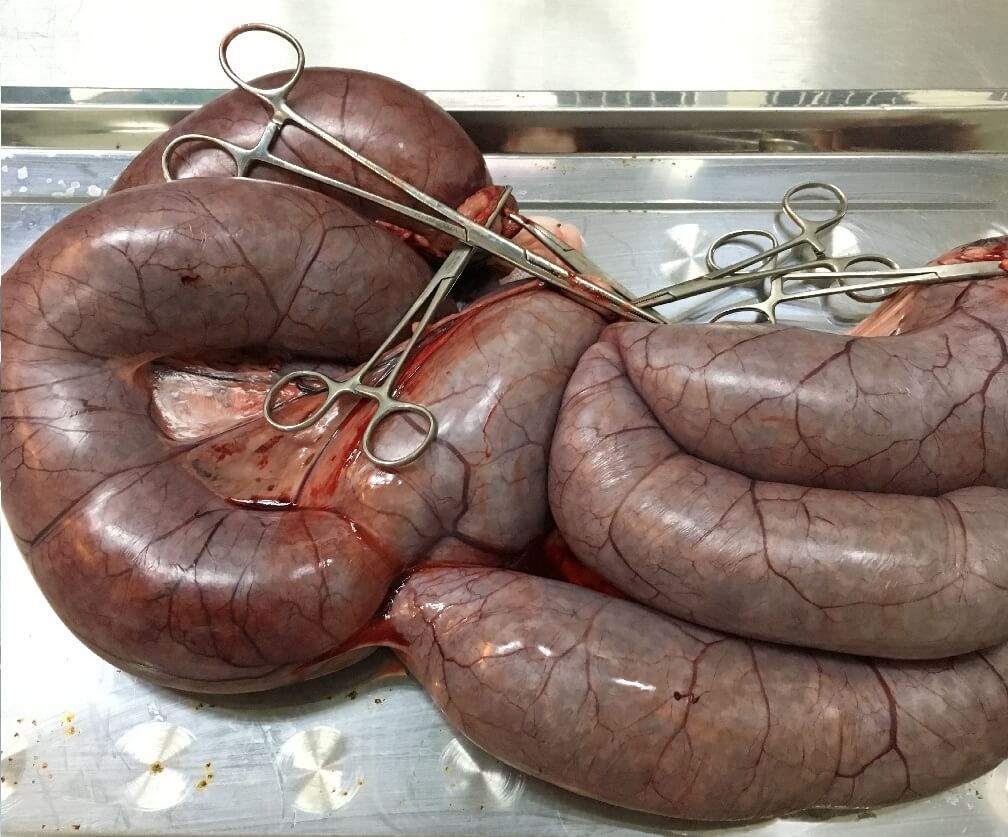Pyometra

What is Pyometra?
Pyometra is an infection of the uterus. This infection causes pus to build up in the uterus and often causes an abnormal distension.
How do they come about?
Repeated hormonal changes as part of the normal oestrus cycle leads to repeated exposure to progesterone and oestrogen. This leads to increased thickening of the uterine lining and build up of fluid, all of which increases the chance of infection.
During oestrus, the open cervix acts as a passageway for bacteria to move from the vagina to the uterus.
If pregnancy does not occur for several oestrus cycles, the repeated hormonal exposure thickens the lining of the uterus and increases fluid secretions. Hence, providing the perfect environment for bacteria to thrive in.
Are all dogs at risk to this condition?
Pyometra can affect any undesexed female patient. It is generally seen in older patients, however has been noted in younger patients as well.
What signs do we see?
- Vaginal Discharge
- Lethargy
- Vomiting
- Inappetence
- Abdominal Distension
- Diarrhoea
These signs usually develop 1-2 months after the last oestrus cycle.
How is it diagnosed?
Diagnosis is usally based on clinical signs, history as well as findings noted during physical examination.
Ultrasonography is the best diagnostic tool recommended to confirm if the uterine body is indeed distended and full of fluid. In certain cases, radiographs may allow visualisation of the distended uterine body.
Blood tests may reveal an elevated white blood cell count depending on the stage and severity of the disease.

Is the disease life threatening?
There are 2 categories of pyometra: open or closed.
When the cervix is closed during the disease process, this is considered a “closed” pyometra. A closed pyometra is more severe and critical. When the cervix is closed, it allows the build up of pus in the uterus, leading to severe distension of the uterus. A rupture of the uterus due to this distension can cause life threatening consequences.
In certain cases, the cervix remains open during the disease process. This is considered an “open” pyometra. The opening of the cervix allows the pus to drain out of the uterus, reducing the build up and rapid manifestation of the disease.
Pyometra can be a life threatening and emergency scenario due to the the severity of a spread of the infection and a risk of rupture of the distended uterus. The infection in the uterus can spread to the rest of the body and affect other organ function as well. Early detection and treatment of the problem allows for faster resolvement.
How is it treated?
Pyometra is considered an emergency scenario.
Due to the nature of the infection, surgery is the preferred approach. An ovariohysterectomy is performed on the affected patient. This involves removal of the entire uterine body surgically, eliminating the source of infection. Follow up medications including antibiotics will be required to treat any residue infection. Supportive care may be necessary if organ function has also been affected.

Comparison between a normal and abnormal uterus
In breeding animals or cases where surgery is not an option, a medical approach is available. Prostaglandins, a group of hormones are usually given in these cases. They reduce the level of progesterone, hereby relaxing and opening the cervix to expel bacteria and pus. This can be used successfully in some cases, however this method may not always be successful and has several limitations.
Can it be prevented?
Yes. Sterilisation of female patients will prevent the condition from happening in the future. If you do not intend on breeding, please do consider sterilisation for your pet’s benefit. Prevention is better than cure.
You would not want this in your own body, so neither will your pet.

Severely distended uterus filled with pus
Please do not hesitate to contact us at 6455 6880 if you have any queries.



